What is neurofeedback?
Neurofeedback or "EEG biofeedback"
APPLIED NEUROSCIENCE
A method imported from the United States and recognized by the scientific community.
Electroencephalography (EEG) neurofeedback is a type of biofeedback therapy that measures and records brain waves. The user receives visual or auditory feedback that helps train the brain to better regulate its activity. Neurofeedback has been used in clinics around the world for decades, and clinical research has shown it to be effective in treating many neurological conditions with lasting results.
Anxiety, depression or lack of concentration are not personality traits but symptoms of a pathology.
Clinical psychological neurophysiology is a biological approach to healing and wellness. I treat a multitude of common disorders such as ADHD, depression, anxiety and insomnia, as well as less common conditions such as PTSD, epilepsy, stroke, brain injury and fibromyalgia. I also work on brain optimization for people who simply want to be their best.
Neurophysiological treatment does not involve pharmaceuticals or other potentially dangerous or ineffective drugs. To understand what a person is suffering from and why, we go directly to the source, the brain. I will measure the relative strength of electrical signals (brain waves) through a process called brain mapping. In this case, we collect data from the upper level of the cortex and potentially from a deeper brain structure through electrodes placed on the scalp.
To learn more about the process and what to expect at your first appointment, click here. The relative strength of the signals emitted by the brain tells us how effective or ineffective certain brain functions are, which is precisely why a person feels or acts the way they do.

Our method
Our staff is well trained, caring and professional. Each of us respects the diversity and dignity of our patients. We welcome advances in learning and technology in order to provide effective, quality patient care.
The software and hardware we use are validated by the U.S. Food and Drug Administration
Customized neurofeedback protocols
Neurofeedback as a therapy
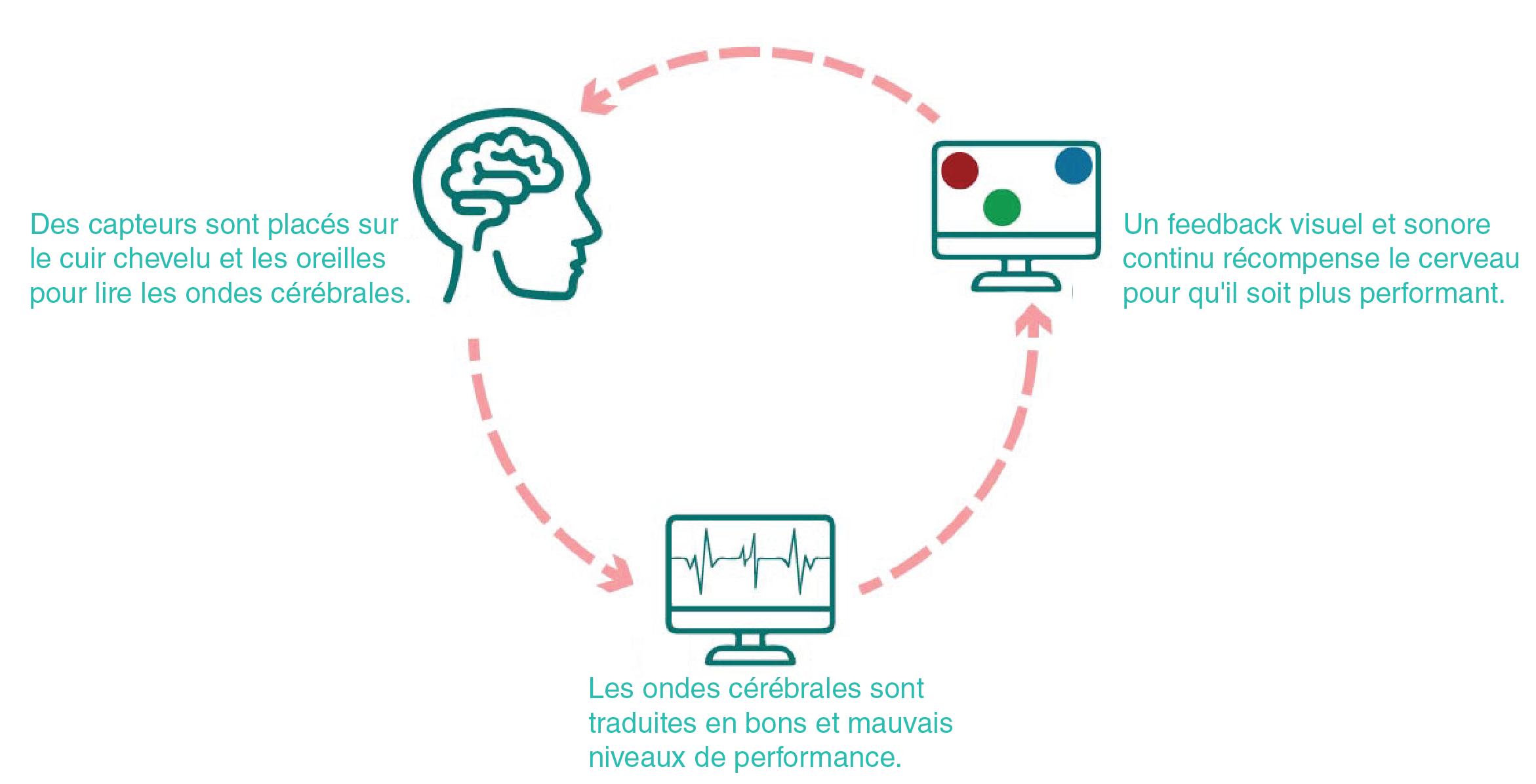
The effectiveness of neurofeedback on some disorders has been more thoroughly researched than others, but in general, neurofeedback training has been shown to be beneficial in the treatment of a variety of neurological disorders, either in combination with medication or as a stand-alone treatment. Among the disorders commonly treated with neurofeedback are ADHD, epilepsy, anxiety, post-traumatic stress disorder, autism, and depression. It is also used to treat general symptoms not related to a specific disorder, such as memory, sleep, coordination and motor problems, as well as excessive stress.
Healthy people, such as artists, athletes, musicians, and executives, also use neurofeedback to improve their performance and “stay on top of their game.” It has been shown to improve memory, promote better sleep patterns, reduce stress and improve motor skills in healthy populations. This form of neurofeedback is known as peak performance training.

The theory behind neurofeedback is that by training certain brain waves (also called frequencies or bandwidths), you can improve brain function, including thoughts, mood, ability to relax or focus. To learn more about how brainwaves work, click here. Research has shown that specific neurological disorders are associated with either too much or too little activity, as measured by EEG, in certain areas of the brain.
In order to determine which brain waves, need to be trained (to increase or decrease their activity) and in which area of the brain, a quantitative EEG assessment (qEEG) is often used. This assessment uses sensors placed at specific locations on the scalp to measure a person’s EEG activity and compares the results to a large database of other individuals in the same age range. After identifying brain waves and locations that are over or under stimulated, neurofeedback can be used to reduce or increase specific brain waves. The instructions for neurofeedback training (the brain waves and locations to be trained) are called protocols.
Neurofeedback protocols are determined by trained professionals based on patient symptom reports and/or by performing a qEEG assessment. In this post, we will explore some common neurofeedback protocols and their uses. The referenced locations are based on the International 10-20 Scalp Mapping System.
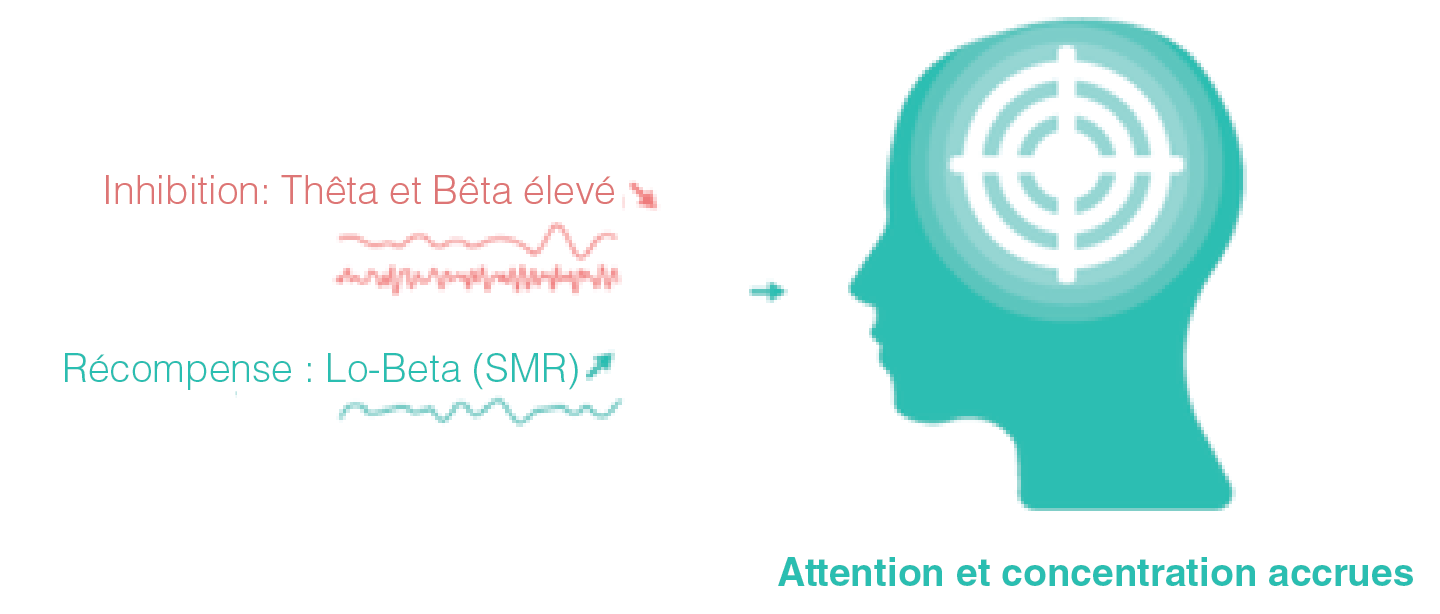
SMR Training
Inhibition: Theta and high Beta
Reward: Lo-Beta (SMR)
Location: Cz or C4
Sensorimotor rhythm training (SMR) was one of the first forms of neurofeedback training that was discovered. Dr. Barry Sterman of UCLA found that he could train cats to increase the amplitude of a specific frequency (12.5-15 Hz) by rewarding them with food each time they reached the threshold. In a subsequent experiment, it was found that cats that had increased their SMR activity were more resistant to seizures.
SMR training is a commonly used protocol for improving attention and concentration. The SMR frequency band (12-1 5Hz) is associated with a state of alertness and attention coupled with calm or quiet motor activities. SMR training improves concentration and focus by decreasing the drowsy, wandering Theta waves and the anxious, fast-moving Beta waves, while increasing the calm, focused SMR waves. SMR training also improves motor precision, balance and the ability to relax.
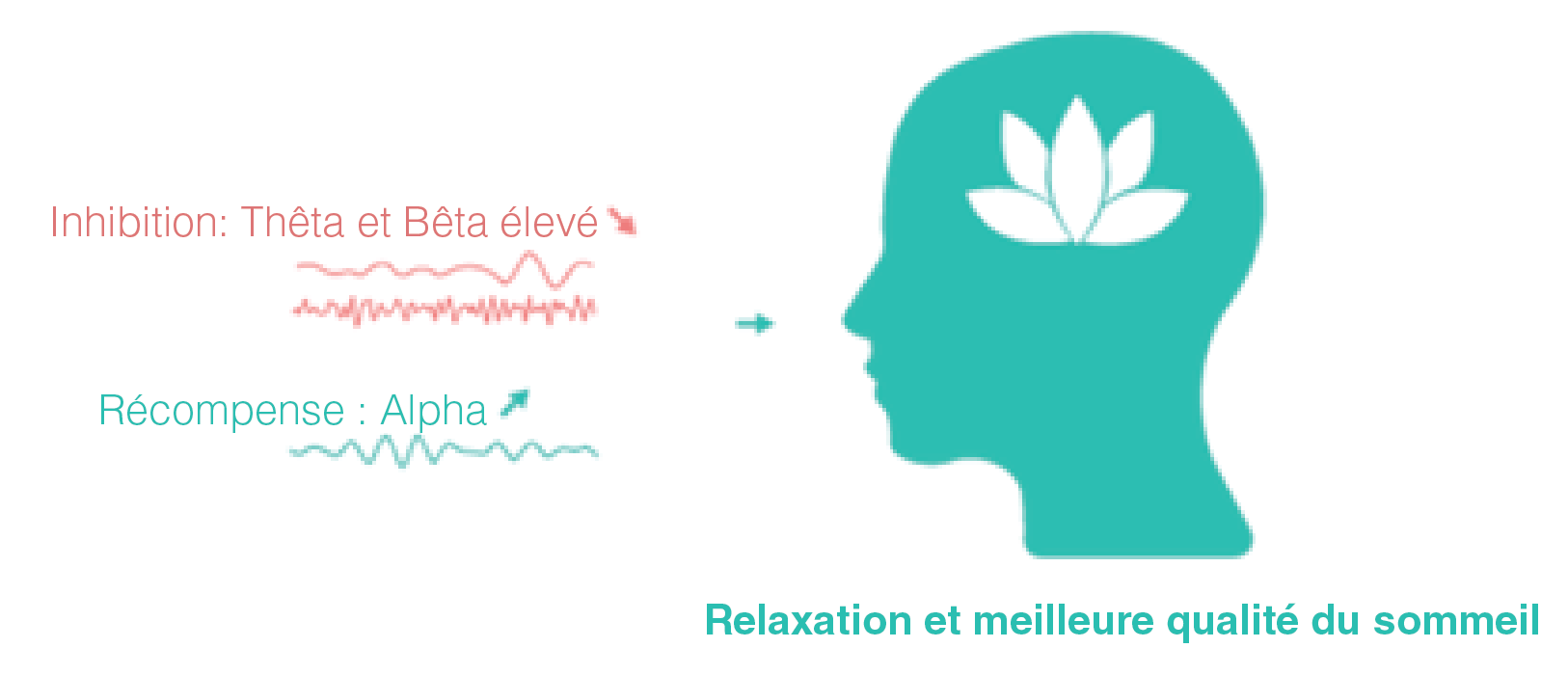
ALPHA Training
Inhibition: Theta and high Beta
Reward: Alpha
Location: Pz
Eyes closed
Alpha training was also one of the first types of neurofeedback training, made popular in the late 1950s and early 1960s by Dr. Joe Kamiya of the University of Chicago. Alpha waves are associated with a state of relaxation, meditation and mindfulness. Most people can naturally increase their alpha waves simply by closing their eyes for a few minutes.
Alpha training helps to improve sleep quality and relaxation. This form of training is usually done with the eyes closed, using only auditory feedback.
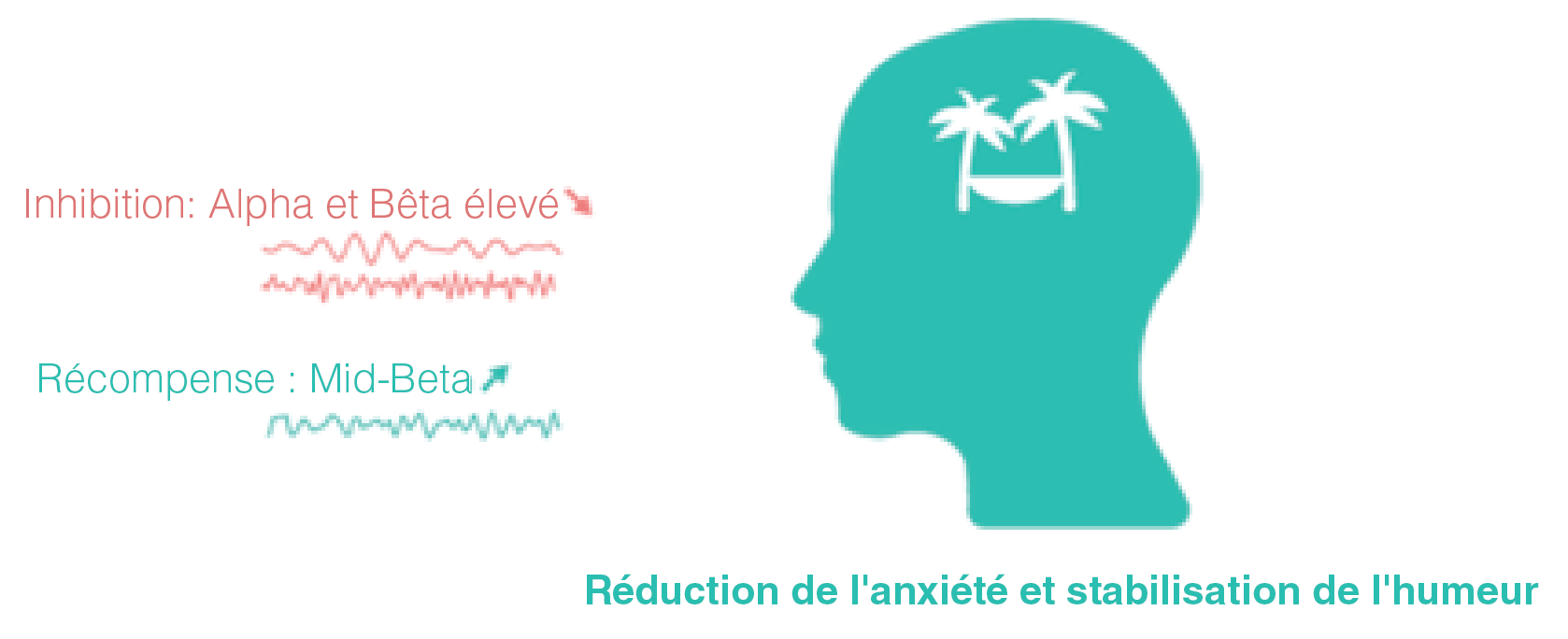
Frontal stabilization
Inhibition: Theta and high Beta
Reward: Mid-Beta Localisation: F3
The frontal stabilization protocol is often used to reduce anxiety and stabilize mood. Studies have shown that patients with major depressive disorder (MDD) often show more alpha activity (8-13 Hz) on the left than on the right in prefrontal locations. This phenomenon is known as alpha asymmetry. Neurofeedback training, which decreases alpha activity in the prefrontal regions and increases mean beta, can be used to stabilize this asymmetry.
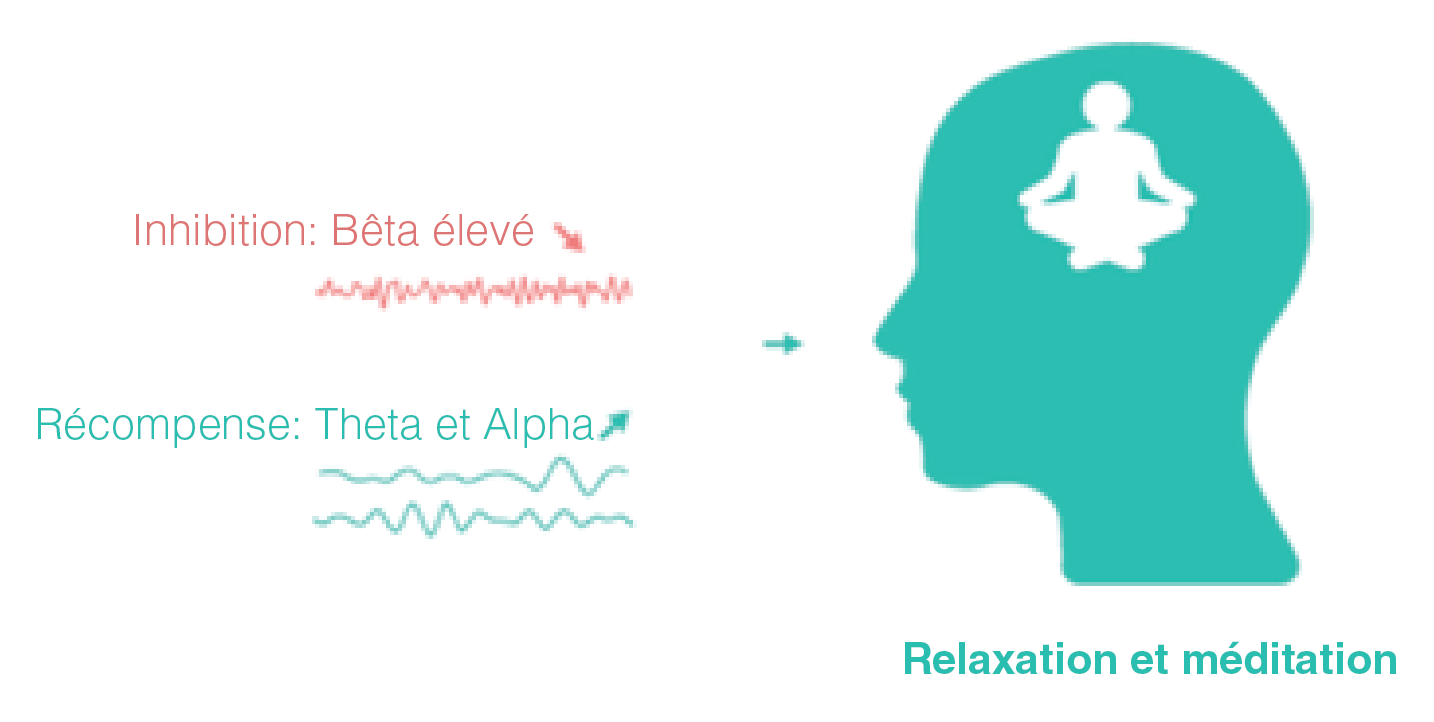
Deep relaxation
Inhibition: High Beta
Reward: Theta and Alpha
Location: Pz or Oz
Eyes closed
An increase in Theta waves can correspond to a state of deep relaxation or meditation, subconscious mental imagery, and free thought. Theta waves are also found in hypnosis and REM sleep. Increasing theta and alpha waves while decreasing beta waves and associated rapid thoughts can lead to a state of deep meditation. Neurofeedback training for deep relaxation should be performed with eyes closed, using auditory feedback only.
